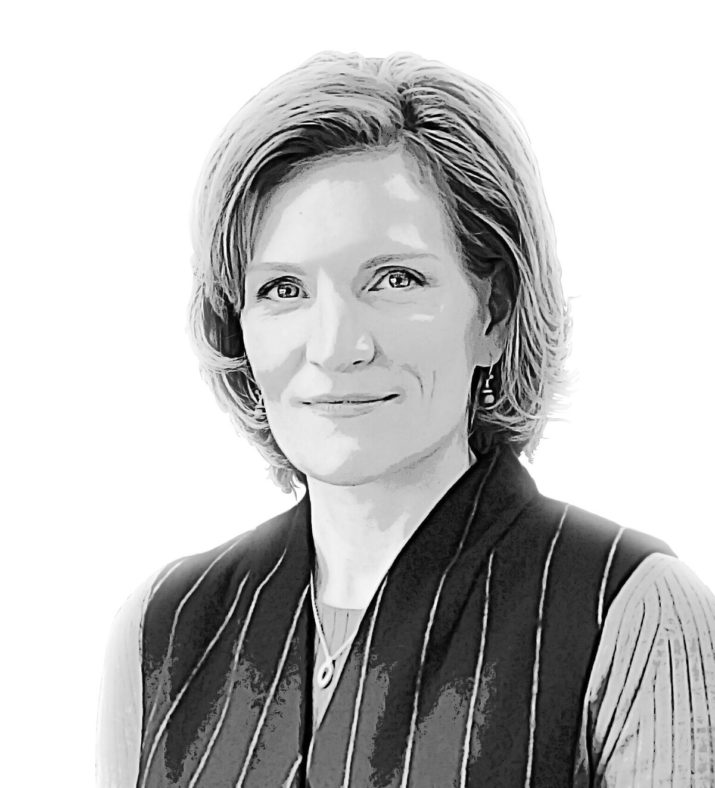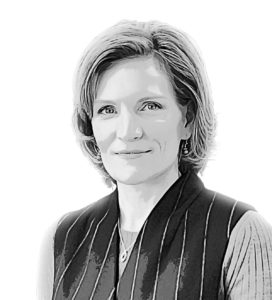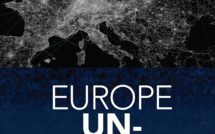

This is part of our Campus Spotlight on American University.
With the populist wave extending across Europe, scholars of diverse disciplines are working to understand this alarming trend and its repercussions in the areas of politics, economics, and popular culture. In this vein, Cynthia Miller-Idriss’ research stands at the forefront of this complex, interdisciplinary, and transcultural problem. Cynthia is a cultural sociologist and teaches as a Professor of Education and Sociology at American University. She is also a founding member of the Radicalism and Violence Research Network at the Council for European Studies. Her current research investigates the political lives of youth far right groups in Europe and their mobilization of cultural symbols in their fashion and aesthetics. In her most recent book, The Extreme Gone Mainstream: Commercialization and Far Right Youth Culture in Germany (2018), Cynthia explores these issues with an interdisciplinary lens – a unique and revealing perspective on issues of interest to the academic community as well as the wider public. My interview with Cynthia focuses on her multifaceted career, her current research, as well as her motivations driving her work in the field.
—Maria Lechtarova for EuropeNow
EuropeNow What is specific to youth far right groups that distinguishes them from other far right organizations?
Cynthia Miller-Idriss The ways that youth engage in the extreme right are often less organized, more fluid, and more subcultural than the way we think of formal or official far right groups, movements, parties, and organizations. My specific interest is in youth I refer to as “in and around” far right scenes and subcultures, rather than at their core. They may move in and out of far right spaces as they spend time with different peer groups, family members, or work colleagues, or as they move between varied spaces like school, work, or sports teams.
EuropeNow How would you characterize the far-right’s use of media outlets? In your research, have you found there to be any particular modes of engagement unique to these groups?
Cynthia Miller-Idriss The parts of the far right that I study—youth scenes and subcultures—make wide use of the internet and social media in ways that I don’t think are unique for their generation, even though these modes of engagement may still be quite unique compared with older generations of the far right. This is one reason why we can’t speak of the “far right” as one monolithic group. There is a spectrum of engagement within the far right, as well as generational differences, that change how different groups and individuals make use of traditional media outlets as well as social media and other internet-based forms of communication.
EuropeNow As a scholar of educational institutions and an educator yourself, what concepts do you find to be most difficult to implement from your research into your teaching practices?
Cynthia Miller-Idriss One of the things I have taken from this research is the need to spend more time in methods courses talking about what it means to study hard topics. Scholars who study topics where they see, hear, and analyze hatred, violence, abuse, exploitation, war or other difficult subjects need to learn how to deal with the psychological difficulties of bearing witness to the darkest and most horrific parts of humanity. I don’t think we have really spent time thinking enough about how we prepare students to handle these topics and their impact on us as researchers or as human beings.
EuropeNow How do far right groups in Europe compare with far right groups in the United States?
Cynthia Miller-Idriss On the youth dimension, there are a lot of similarities, but one difference is that European scenes are more affected by broader censorship policies and restrictions on what kinds of symbols and slogans can legally be displayed. That has led to more game-playing and coding in the kinds of symbols used in clothing, tattoos, and far right communication on the European side, especially in Germany.
EuropeNow In your most recent book, The Extreme Gone Mainstream: Commercialization and Far Right Youth Culture in Germany (2018), you examine a political movement through material cultures of fashion and iconography. How did you conceptualize the framework of this book, and what is to be gained from its interdisciplinary perspective?
Cynthia Miller-Idriss The book project was initially an image analysis, as I worked with thousands of historical and contemporary images to trace transformations in German far right scenes over time. I later added a qualitative, interview-based component in order to learn how young people were consuming and understanding these material cultures and symbols. This mixed-methods approach required me to learn new skills in visual analysis, and I was particularly helped in this regard by the year I spent as a fellow at the University of Cologne’s Morphomata Center for Advanced Studies. Feedback from art historians, classicists, religious studies faculty, and other humanities scholars helped me move beyond seeing images and symbols as data points that created patterns, toward an approach that recognizes the power individual images can have as well. I learned to pay much more attention not only to the symbols themselves, but to everything else going on in a photo—facial expressions, musculature, body language, interactions, text, and the broader context and framing of the image. Overall, I am certain that I wrote a much better social science book because of that year in dialogue with humanities scholars, and I think that speaks a lot to the value of interdisciplinarity and how it can take us out of our comfort zones in important ways.
EuropeNow Can you say a little bit about your role as a founding member of the Radicalism and Violence Research Network at the Council for European Studies? What are the group’s mission and goals for future research?
Cynthia Miller-Idriss My co-director Fabian Virchow and I conceived of the Radicalism and Violence network as a space for scholars to come together across disciplines, national contexts, and ideological areas of focus (e.g., scholars of Islamist extremism alongside scholars of far right extremism) for dialogue. The network is now in the hands of new co-directors but my hope is that it continues to be a place where scholars can share cutting-edge research and learn across traditional boundaries that often make it harder for us to collaborate or meet each other.
EuropeNow Throughout your career, you have engaged in many different genres of writing, publication, and media outreach including radio, public forums, op-ed pieces, edited volumes, and monographs. Would you consider yourself a public intellectual? How would you characterize the audiences, to which your diverse body of work speaks?
Cynthia Miller-Idriss If being a public intellectual means connecting research and academic ideas with the public, then absolutely; I hope that I am able to do that through my writing, whether for academic or mainstream audiences. And I hope that by writing in different kinds of places, my work can reach different types of audiences so that things I have learned can be meaningfully shared with scholars, practitioners, and interested citizens. I find writing for—and speaking to—general publics very rewarding and hope that will always be part of my work as an academic.
EuropeNow As a professor at American University, and a member of its community, how do you feel about extremism on campus? How do you view your role in managing political conflict at the university level?
Cynthia Miller-Idriss Universities across the country have increasingly become targets for extremist propaganda, hate incidents and hate crimes perpetrated by outside groups as well as political tension within campuses. My biggest concern is trying to ensure that students from vulnerable and marginalized groups feel safe and supported. I’m part of a group of faculty members who went through intensive training last fall and then led trainings for other faculty on inclusive pedagogy, which is one small step toward ensuring a supportive and safe environment. But there is much more work to be done.
EuropeNow How has your identity as a female academic impacted your research?
Cynthia Miller-Idriss There are multiple ways that being a female academic has affected my research—from the willingness of participants to speak with me to the kinds of limitations I felt in terms of how comfortable I would be expanding ethnographic observations with far right youth outside of the confines of schools. But most consequential for me has been the timing of my research and data collection with motherhood and all the logistical and emotional challenges that brought for me and my family. The Extreme Gone Mainstream was conceived during a research trip to Berlin with a nursing infant and toddler in tow, and I brought my kids back to Germany for several short-term (1-2 months) and longer term (one year) residencies in the years to come. Fathers face many of the same issues over the long term, but the doing international fieldwork while navigating pregnancies and nursing bring unique challenges that I felt keenly as a female academic.
EuropeNow Throughout your prolific career, you have collaborated with many other scholars and organizations. What has been most valuable to you from your experience doing collaborative work?
Cynthia Miller-Idriss I learn a lot from working in multi-disciplinary research teams; we all bring different prior expertise and training to bear on the projects we are working on. But collaborative work has also been valuable to me because it eases the isolation of academia. I’ve spent days on end with co-authors in team planning meetings, data analysis sessions, workshops, trainings and writing retreats across the U.S. and globally. You get to know people really well when traveling together, and these colleagues have supported one another not only in our collaborative work and individual research projects, but also through children’s births and graduations, weddings and divorces, parents’ illnesses and deaths. These long-term collaborations with colleagues, in other words, have been both intellectually rewarding and personally fulfilling.
EuropeNow How do you see the future of the far right in Europe and in the United States? Do these groups represent a larger geopolitical shift?
Cynthia Miller-Idriss There is definitely a global geopolitical shift happening toward the right in Europe and the United States. I think some of the most important questions in the years to come will revolve around how we prevent violence; how we ensure key democratic principles like the protection of minority rights and a free press; and how we navigate new information landscapes that make it easier for ordinary people to be manipulated by fake news and extremist rhetoric than was the case in the past.
Cynthia Miller-Idriss is Professor of Education and Sociology in the College of Arts and Sciences and Director of the International Training and Education Program in the School of Education. Professor Miller-Idriss earned her bachelor’s degree from Cornell University, and an MA in Sociology, an MPP in Public Policy, and a Ph.D. in Sociology from the University of Michigan. Her current research follows two main trajectories, focused on the internationalization of higher education in the U.S., and education and far right wing youth culture in Germany.
Maria Lechtarova is a third-year PhD candidate in Sociocultural Anthropology at New York University. She earned a MA at the Harriman Institute of Columbia University in Russian, Eurasian, and East European Affairs. Her research centers on the use of print-media in the cultivation of nationalist sentiment in the post-Soviet world, with a particular emphasis on the Balkans.
Published on October 2, 2018.




